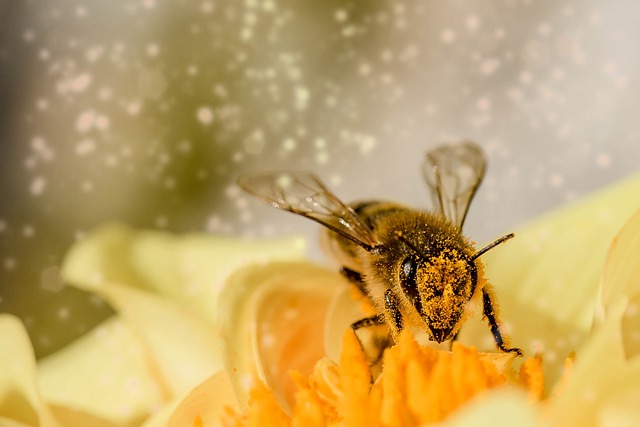Garden Chores in March
go.ncsu.edu/readext?1056610
en Español / em Português
El inglés es el idioma de control de esta página. En la medida en que haya algún conflicto entre la traducción al inglés y la traducción, el inglés prevalece.
Al hacer clic en el enlace de traducción se activa un servicio de traducción gratuito para convertir la página al español. Al igual que con cualquier traducción por Internet, la conversión no es sensible al contexto y puede que no traduzca el texto en su significado original. NC State Extension no garantiza la exactitud del texto traducido. Por favor, tenga en cuenta que algunas aplicaciones y/o servicios pueden no funcionar como se espera cuando se traducen.
Português
Inglês é o idioma de controle desta página. Na medida que haja algum conflito entre o texto original em Inglês e a tradução, o Inglês prevalece.
Ao clicar no link de tradução, um serviço gratuito de tradução será ativado para converter a página para o Português. Como em qualquer tradução pela internet, a conversão não é sensivel ao contexto e pode não ocorrer a tradução para o significado orginal. O serviço de Extensão da Carolina do Norte (NC State Extension) não garante a exatidão do texto traduzido. Por favor, observe que algumas funções ou serviços podem não funcionar como esperado após a tradução.
English
English is the controlling language of this page. To the extent there is any conflict between the English text and the translation, English controls.
Clicking on the translation link activates a free translation service to convert the page to Spanish. As with any Internet translation, the conversion is not context-sensitive and may not translate the text to its original meaning. NC State Extension does not guarantee the accuracy of the translated text. Please note that some applications and/or services may not function as expected when translated.
Collapse ▲VEGETABLES
- Mulch garlic and asparagus well to prevent early competing weeds from invading the beds.
- Early- to mid-March plant English and edible-pod peas, onions, and kale.
- Mid-March plant spinach, turnips, radishes and onions.
- Wait until late March to set out potatoes and plants of cabbage, broccoli and cauliflower.
- Start transplants indoors for tomatoes, peppers and eggplants mid-month. They will need 6 to 8 weeks to be ready for the garden.
- Mow or cut back cover crops and turn whenever the soil isn’t too wet to work.
ARE YOU STARTING A VEGETABLE GARDEN?
THIS YEAR FOR THE FIRST TIME EVER?
If the answer is YES
Click HERE to view a 3 part series on Vegetable Gardening 101.
Western North Carolina Planting Calendar for
Annual Vegetables, Fruits, and Herbs
ORNAMENTALS
- Summer-blooming shrubs and trees such as butterfly bush, rose-of-Sharon and crepe myrtle can be pruned now.
- March is a good time to do severe or rejuvenation pruning when overgrown shrubs need to be renovated.
- Otherwise lightly prune spring-blooming plants or wait until after the flowers fade.
PRUNING?
Go slow and stop often.
Step back to review and gauge your progress.
It’s important to know when to stop.
You can cut off a branch but you can’t stick it back on.
Sometimes removing deadwood and branches that are
crossing or growing inwards is all that is needed!
Check out this 4 part series of publications
on Pruning Trees and Shrubs from NC State Extension
- Repot and trim up houseplants. Rejuvenate hanging baskets and use cuttings to start new baskets.
- Check houseplants for insect infestations. Plants can be taken outside on a warm day for spraying, but bring them in before dark.
- Go here to learn more about Growing Plants in Containers
- Sow seeds for larkspur, poppies and snapdragons.
- Still time to cut back perennials and ornamental grasses as well as liriope and mondo grass.
- Check for winter weeds. Pull bittercress and chickweed before they flower.
- Plant trees, shrubs and perennials.
- When planting trees and shrubs, make sure to dig the hole only as deep as the root ball and at least two to three times wide. This will avoid long term issues and decline. Read more about more about Planting Woody Ornamentals
FRUIT
- Remove straw or row covers from strawberry plants as soon as flowers appear.
- Prune fruit trees, grapes and brambles. Remove last year’s fruiting canes and thin new canes to 3-4 per square foot.
- Apply fresh mulch on blueberries to keep shallow roots cool and weed free.
- Again spray dormant oil, especially if you have had a mite or scale problem.
- Fertilize all fruit crops.
- Apply fresh mulch on blueberries to keep shallow roots cool and weed free.
- Do not prune fruit trees until March–especially peaches.
- Plant fruit trees, grapes and brambles.
QUICK REFERENCES ON SMALL FRUITS & TREE FRUIT
LAWNS
- If you have not yet gotten around to the spring fertilizer application, you’re almost out of time. Mid March is the recommended deadline.
- There is still time to seed bare spots.
- Consider making changes to your lawn to reduce maintenance costs and time.
- Reduce lawn area and cut out problem areas:
- Wet and/or shady
- Constant, heavy traffic areas
- Difficult to maintain areas: narrow strips, tight angles, under trees
- Expand mulched area around trees and beds.
*Tolerate diversity. Many weeds provide important resources for pollinators – especially early spring bloomers.





